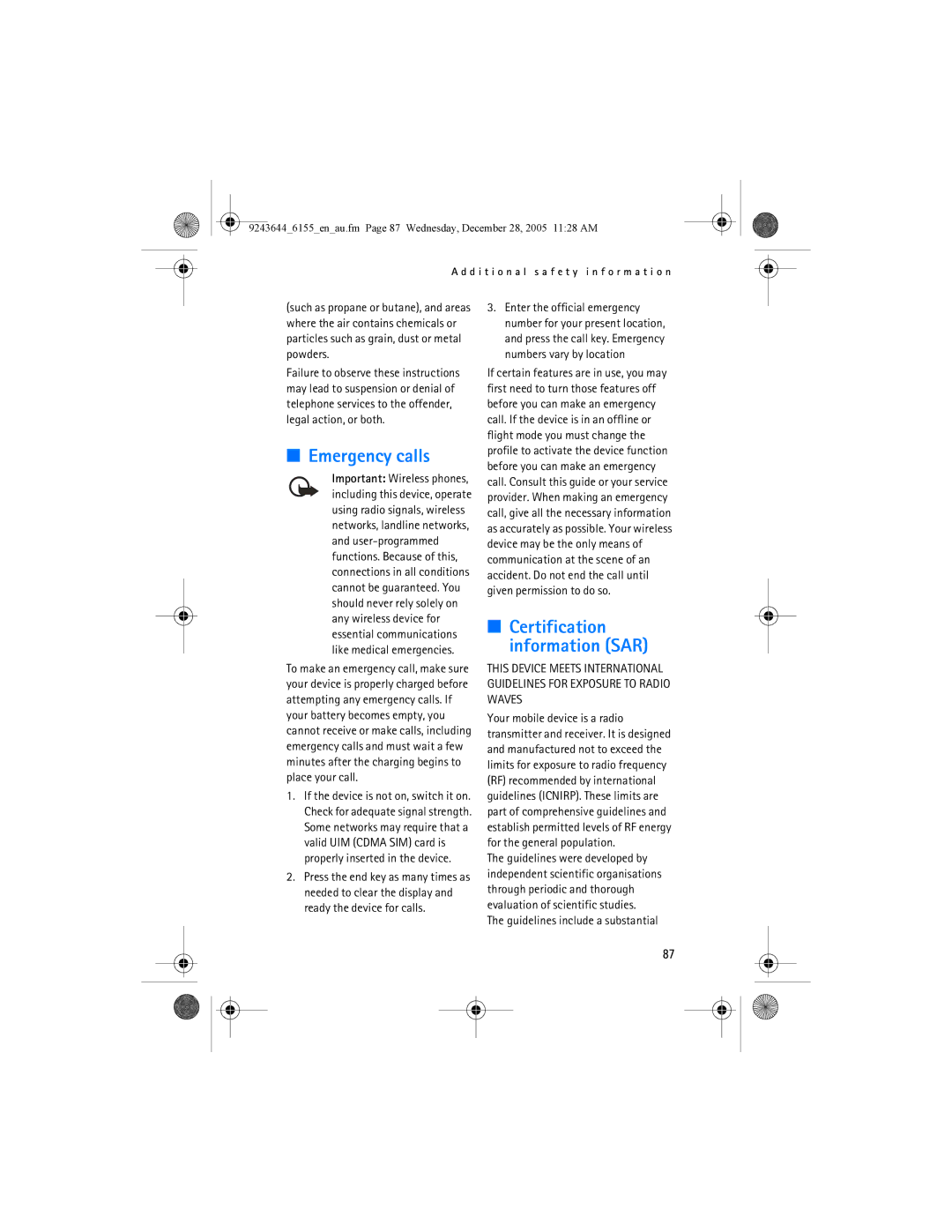
9243644_6155_en_au.fm Page 87 Wednesday, December 28, 2005 11:28 AM
A d d i t i o n a l s a f e t y i n f o r m a t i o n
(such as propane or butane), and areas where the air contains chemicals or particles such as grain, dust or metal powders.
Failure to observe these instructions may lead to suspension or denial of telephone services to the offender, legal action, or both.
■Emergency calls
Important: Wireless phones, including this device, operate using radio signals, wireless networks, landline networks, and
To make an emergency call, make sure your device is properly charged before attempting any emergency calls. If your battery becomes empty, you cannot receive or make calls, including emergency calls and must wait a few minutes after the charging begins to place your call.
1.If the device is not on, switch it on. Check for adequate signal strength. Some networks may require that a valid UIM (CDMA SIM) card is properly inserted in the device.
2.Press the end key as many times as needed to clear the display and ready the device for calls.
3.Enter the official emergency number for your present location, and press the call key. Emergency numbers vary by location
If certain features are in use, you may first need to turn those features off before you can make an emergency call. If the device is in an offline or flight mode you must change the profile to activate the device function before you can make an emergency call. Consult this guide or your service provider. When making an emergency call, give all the necessary information as accurately as possible. Your wireless device may be the only means of communication at the scene of an accident. Do not end the call until given permission to do so.
■Certification information (SAR)
THIS DEVICE MEETS INTERNATIONAL GUIDELINES FOR EXPOSURE TO RADIO WAVES
Your mobile device is a radio transmitter and receiver. It is designed and manufactured not to exceed the limits for exposure to radio frequency (RF) recommended by international guidelines (ICNIRP). These limits are part of comprehensive guidelines and establish permitted levels of RF energy for the general population.
The guidelines were developed by independent scientific organisations through periodic and thorough evaluation of scientific studies.
The guidelines include a substantial
87
